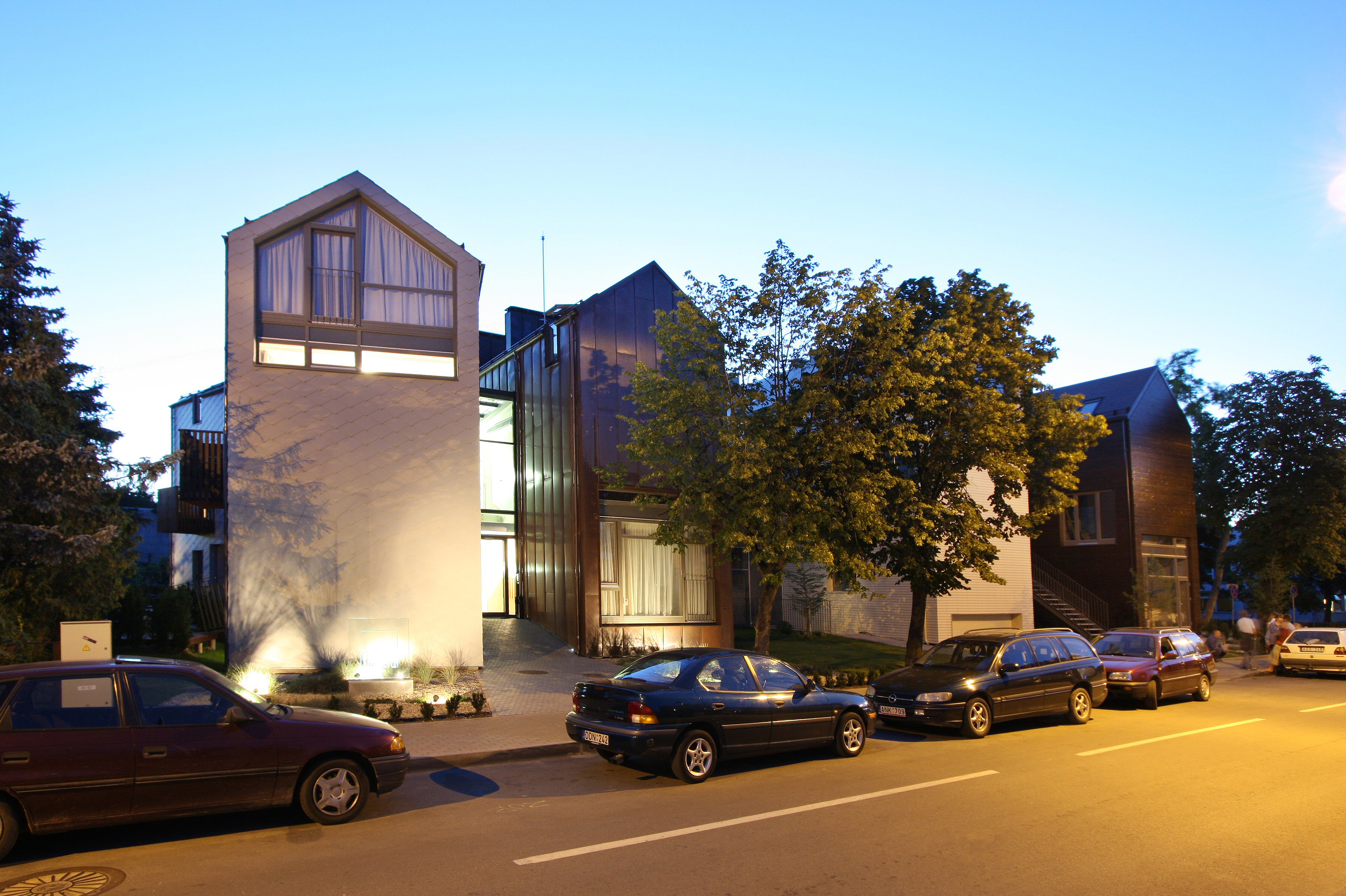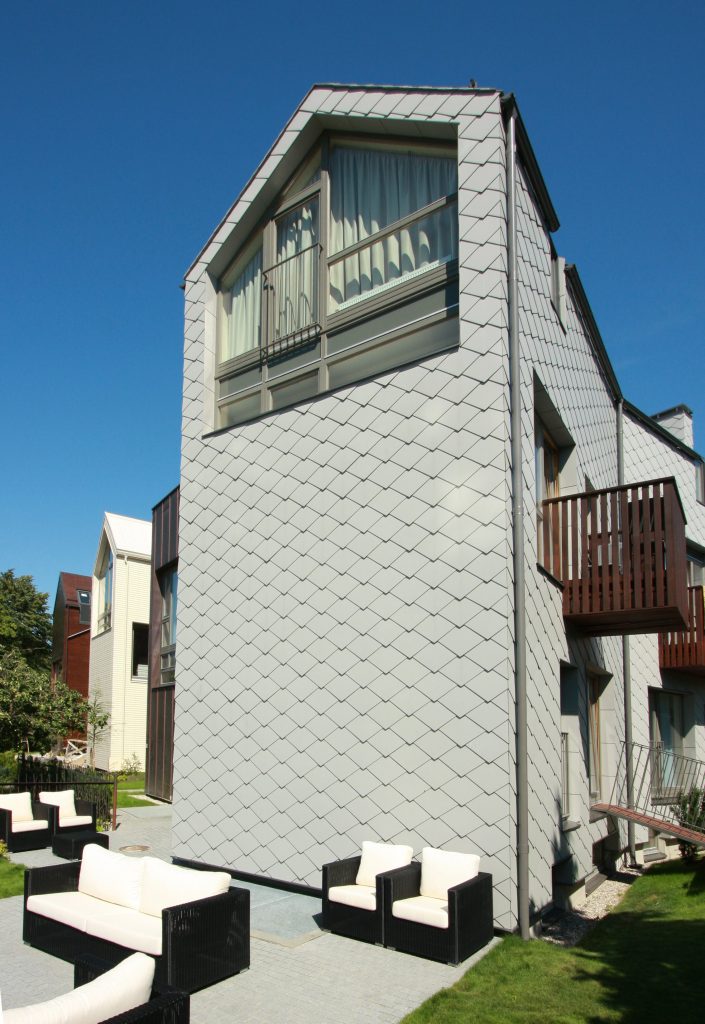Sand Villas
Sand Villas
Smilčių (Sand) and Žvejų (Fishermen) streets have long been home for fishermen, whose smoked fish attracted tourists Various colors resort villas with their cozy courtyards and the sea – just a few steps away.
The object “Sand Villas“ tried to integrate into the environment as much as possible, maintaining the core logic of the spaces: small volume, separate yards spaces, textures. The compositional structure is conditioned by the function of the complex and the urban rhythm of the street.
- Location
- Užkanavė
- Stage
- Realisation
- Category
- Recreational
- Area
- 1 471m²
- Client
- Private
- Authors
- Edgaras Neniškis
- Vaida Sasnauskaitė
- Rūsna Vaineikytė
- Rolandas Liola
- Arūnas Liola


Holidaymakers have the opportunity to be in a private space (courtyards, separate terraces), it is not difficult for them to identify their living corpus, because the four different volumes have their own materials. These are the most common materials found on the seaside and its architecture: cement scales (roofs of old Klaipeda houses), rusty metal (rusty ships, constant erosion), clinker (coastal villas, sand), wood (fishermen’s homesteads, boats).
The rhythm of the individual volumes is also emphasized by the outdoor elements: the green courtyards are separated by strips of small stones that extend the volume of each building on the ground. However, it is also possible to socialize here by going out of the glass hall to the public yard on the west side of the plot, where you can have a dinner and let the children to release all their plent-up energy. The complex also includes a common breakfast-entertainment hall and a sauna complex with its own yard.
The guest rooms have multi-directional lighting, creating an impression not only of spaciousness but also of living in the rhythm of the sun.
Design
The interpretation of roofs of old Klaipeda houses
Rusty ships, constant erosion
Coastal villas, sand
Fishermen’s homesteads, boats

